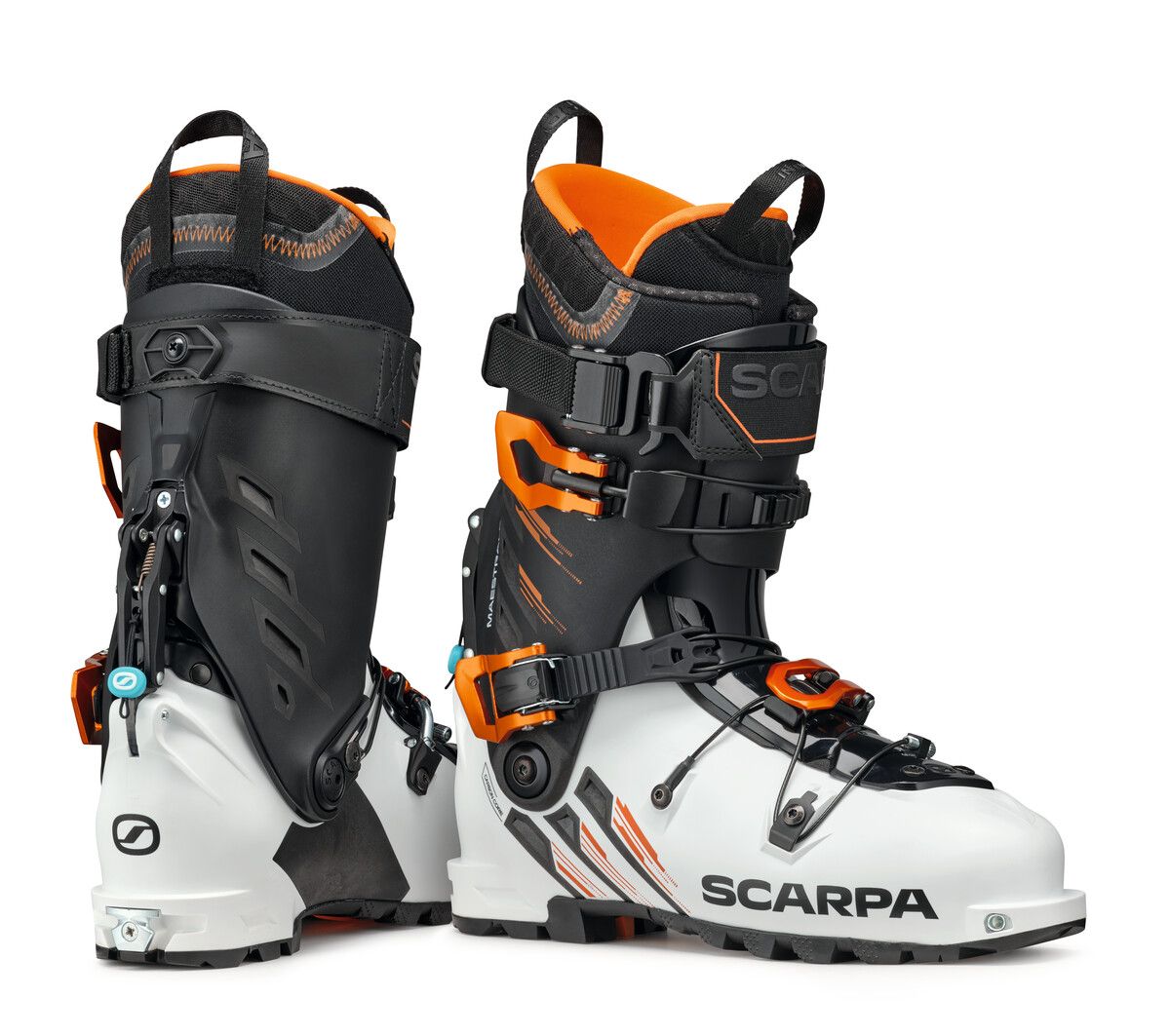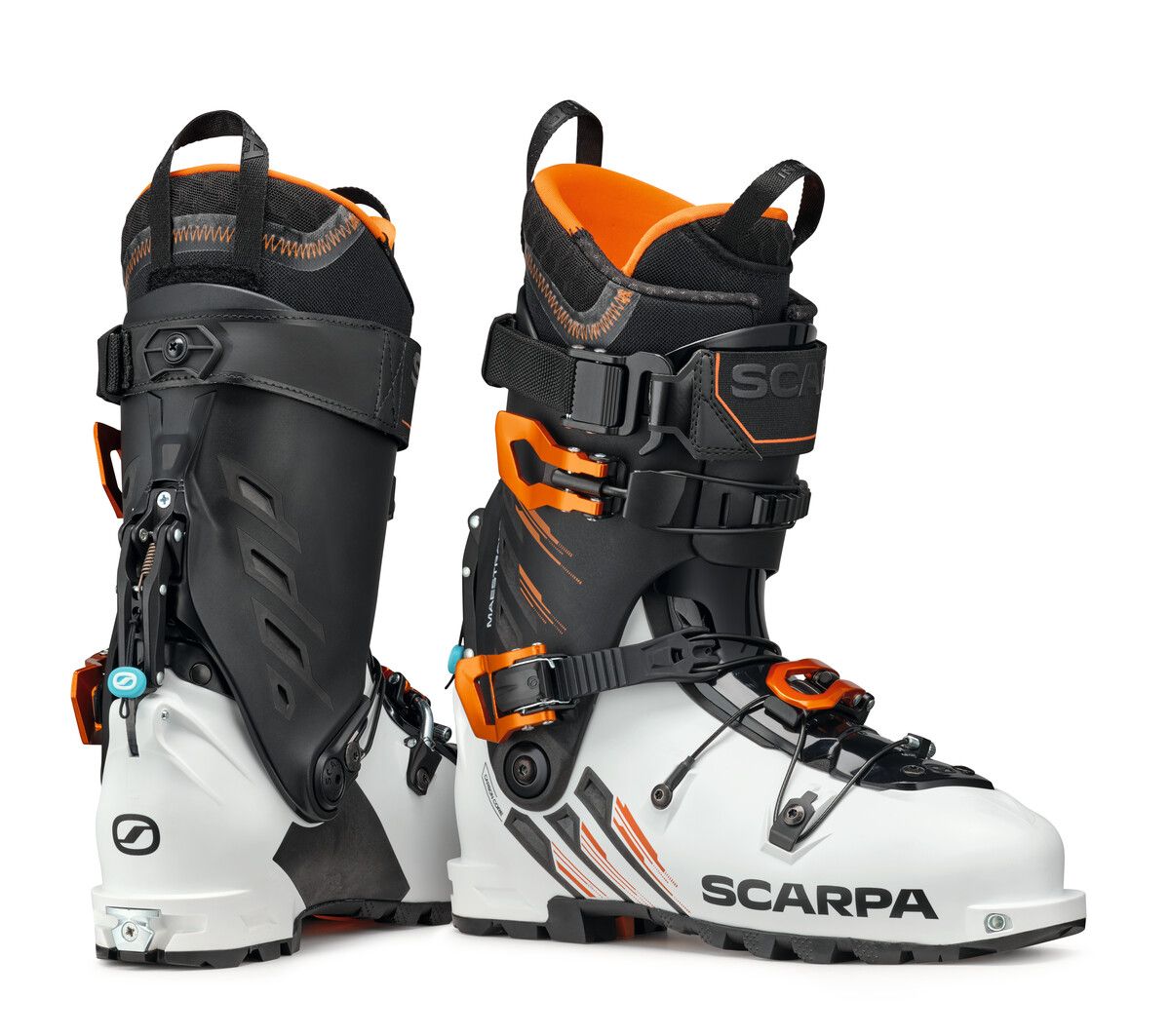 The launch of the completely redesigned Scarpa Maestrale family largely flew under the media radar last fall. That’s surprising given that the Maestrale has been the best-selling AT boot of all time. Maybe it’s because it doesn’t look that different? But the new iteration is a big departure from years of incremental upgrades – this is a completely new boot with a familiar silhouette.
The launch of the completely redesigned Scarpa Maestrale family largely flew under the media radar last fall. That’s surprising given that the Maestrale has been the best-selling AT boot of all time. Maybe it’s because it doesn’t look that different? But the new iteration is a big departure from years of incremental upgrades – this is a completely new boot with a familiar silhouette.
According to Scarpa, the main goals for the redesign were to improve fit and downhill performance, which backcountry skiers know can be either harmonious or opposing goals. There’s more carbon and an entirely new shell shape, among other updates.
The Maestrale family raised me, so I had to dig in. I spent about half of last season in two different pairs of the new Maestrale RS’s, and I can say without any hesitation that these are the best Maestrale’s yet. But there are still a few tiny details that I think could be upgraded with the next iteration (or in a gear tinkerer’s garage).
Fit and Sizing
First off, the new Maestrale doesn’t fit like your old Maestrale. People always say, “try it on before you buy it” and I’m usually like, “why would I do that when I already know my size?” Well, that arrogance came back to bite me.
I started with a size 27.5 Maestrale RS. I’ve been a 27.5 Mondo in Scarpa, which break on the full size (i.e. 27.5 and 28 are in the same shell) since Maestrale Gen 1. My Scarpa F1’s and F1 XT’s, size 28, fit about perfectly without enough room to downsize. The new Maestrales, which have a 2mm longer BSL, are longer internally. I knew instantaneously that I made a mistake in sizing when I slipped my foot into a smaller 27 at Cripple Creek Backcountry.
So after about 15 days of skiing, to the annoyance of the gracious Scarpa reps that helped get me new boots to test, I had to swap for a 27. Now that I’m another ~25 tours into the new boots, the fit is dialed.
It wasn’t just me. Bootfitters at Cripple Creek and others have found that there’s a distinct size discrepancy between the new Maestrale, F1 LT/XT, and the Quattro. Folks that were on the brink of sizing down before will very likely be sizing down with the new Maestrale. And a 28 Quattro/F1 isn’t the same as a 28 Maestrale. Moral of the story? Try these things on at your local shop before committing.
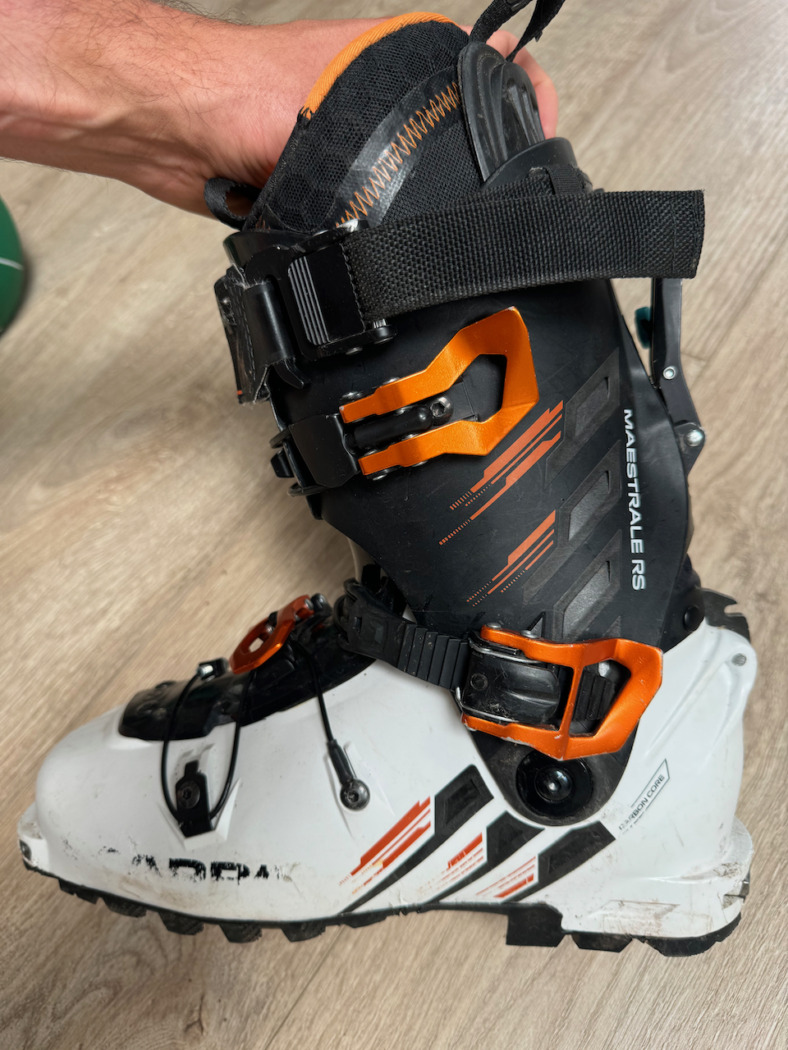
Once the self-inflicted bootfitting kerfuffle was sorted, I quickly felt the impact of the new shell’s shape. The new heel cup is narrower than previous iterations, and it’s more cup-like. It does a much better job at holding the heel in place, even after the 258g Intuition Pro Flex Performance liners broke in naturally (without heat molding).
My old Maestrales are stuffed with shims underneath the liner and footbed to mitigate the heel lift. That hasn’t been the case with the new version. I did add the included 4mm full-length volume-reducing shim when I was struggling with the larger size, but once I sized down, I haven’t had to add any aftermarket adjustments to keep my heel locked in or reduce rubbing. I have yet to get a blister, even sans Leukotape. That’s a big improvement in itself.
The shell is lower volume than the previous versions, which were quite roomy and could get sloppy once the liners packed out. Width-wise they felt similar but are actually 1mm wider at an accommodating 102mm last. But again, they didn’t feel sloppy side-to-side even with average width feet.
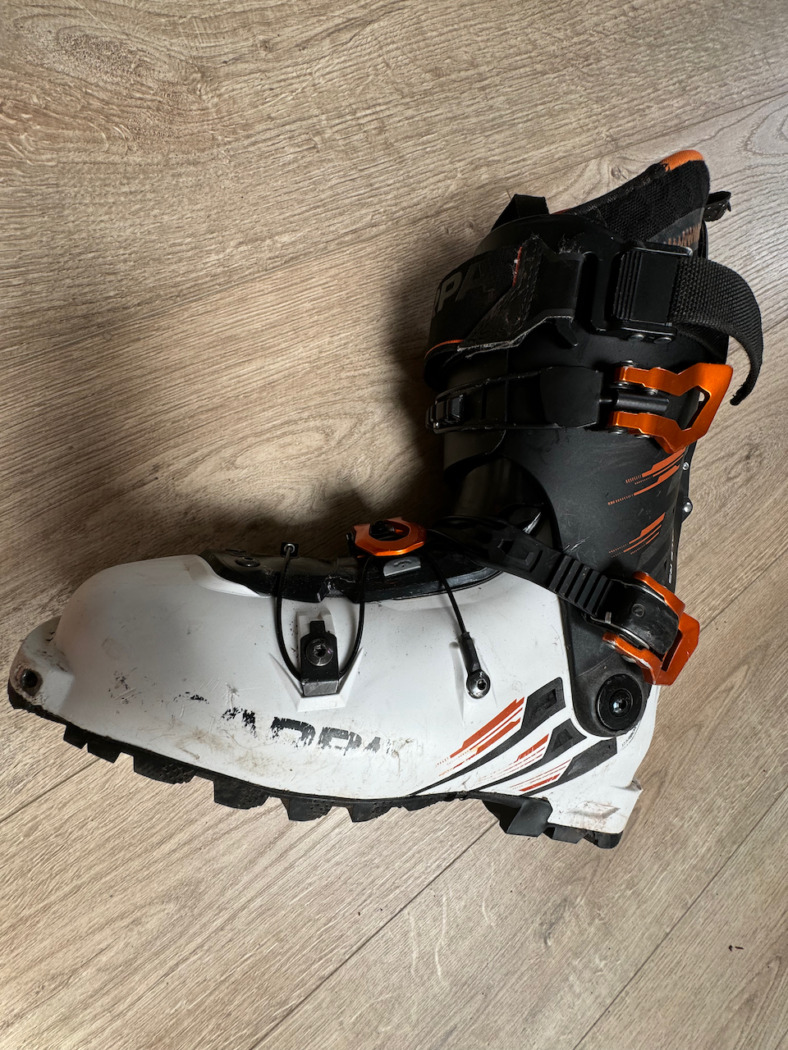
The Maestrale RS buckle layout is mostly the same but with the addition of the power strap
Buckles and Straps
I skied a lot of vertical in the new Maestrale, including a few mogul bashing days at Alta. The new Maestrale received a power boost without a doubt, and I’ve been working to tease out where that comes from. Turns out, it’s a few things.
First off, the power strap on the RS version of the boot is an automatic performance enhancer. It’s a camming power strap very similar to a Booster Strap, which most power-oriented boots are moving towards now that Booster’s patent has expired. The actual camming device is much lighter, though, at 25g apiece compared to Booster’s 54g. This isn’t completely new – the Maestrale XT, a beefier version of the boot, has had the hooked cam for a few years, but this is the first year that it has trickled down to the Maestrale RS.
The camming hook is big, meaty, and easy to hook. However, it does unhook pretty easily when it’s stuffed underneath my pant gaiter. I ended up reattaching it on about half of uphill-to-downhill transitions. I think that style works well for an alpine boot, since it typically remains tight, but I think it needs a little extra security to keep it latched given that fully loosening it is required to unlock the Maestrale’s range of motion.
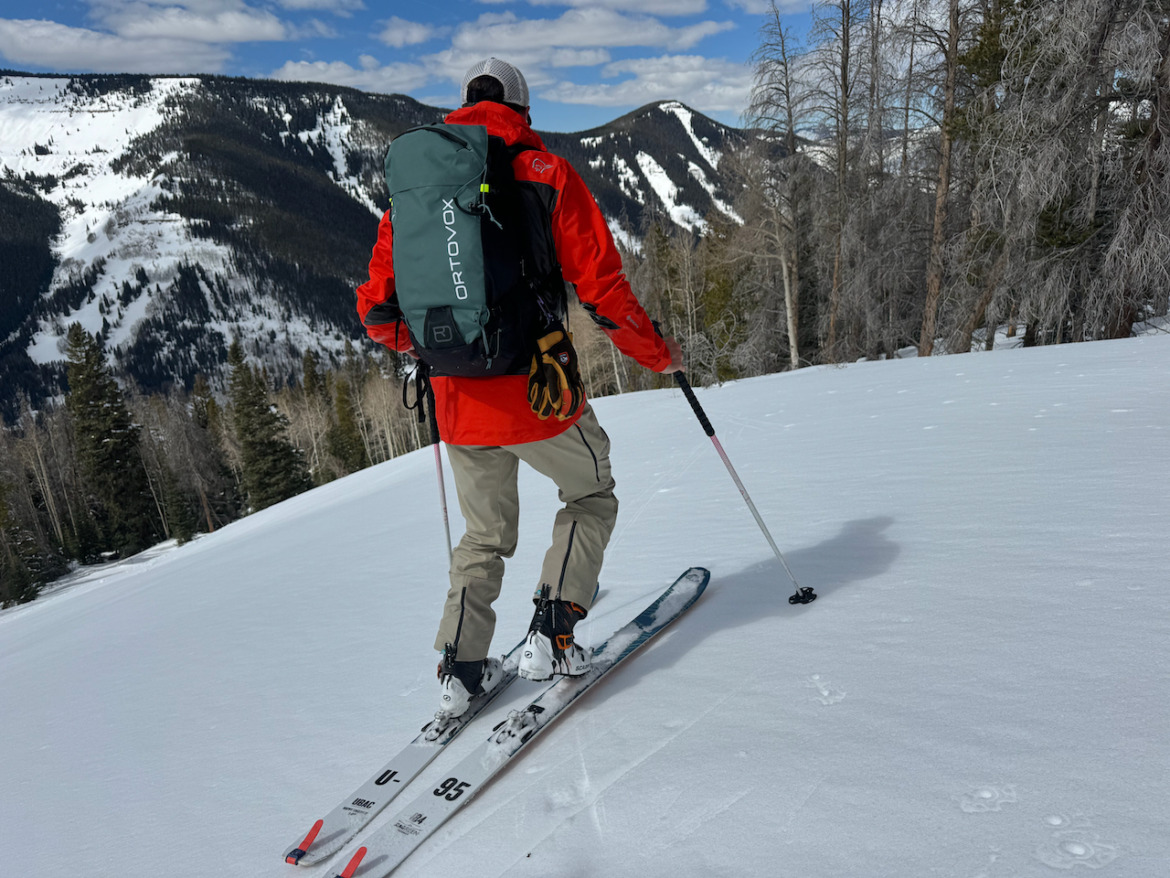
The elasticity of the strap does more than just enhance power, though. Really it’s more about the fit enhancement. When it’s pulled tight, it virtually eliminates dead space between my shin and the tongue. That translates to immediate tongue engagement rather than a more on/off feeling. It helps the progressive ramp up start much earlier and allows more elasticity in that initial progression. The result? They’re more active and engaging at slower speeds before you have the momentum to really lean into the tongue.
Other than the power strap, things are pretty similar in the tightening department. The upper buckle is refreshingly simple with a beefier buckle ladder. The Instep strap, now more easily replaceable, is unchanged performance-wise. The lower Z-buckle on the shell now sports a barrel adjuster for micro-adjusting tension.
Paired with the new shell shape, the buckles and straps did an excellent job keeping my feet in place, my heels locked down, and my shins engaged. This is the upgrade that the traditionally roomy Maestrales have always needed.
Materials
The Maestrale hasn’t deviated away from its longstanding three piece Cabrio design. Other than a bit more power-enhancing cuff overlap, the overall design is similar to previous iterations. Materials got an upgrade, though – they have Grilamid Bio shells with Carbon Core under the arch, Pebax Rnew cuffs, also with strategically placed carbon, and Pebax tongues.
The new carbon in the shell and cuff surrounds the main pivot to add stiffness where the shell deforms deep into the boot’s flex. It’s a good addition – the boots’ flex progression feels predictable and it doesn’t fold when it’s really leveraged forward. I appreciated fewer instances of that “going over the bars” feeling.
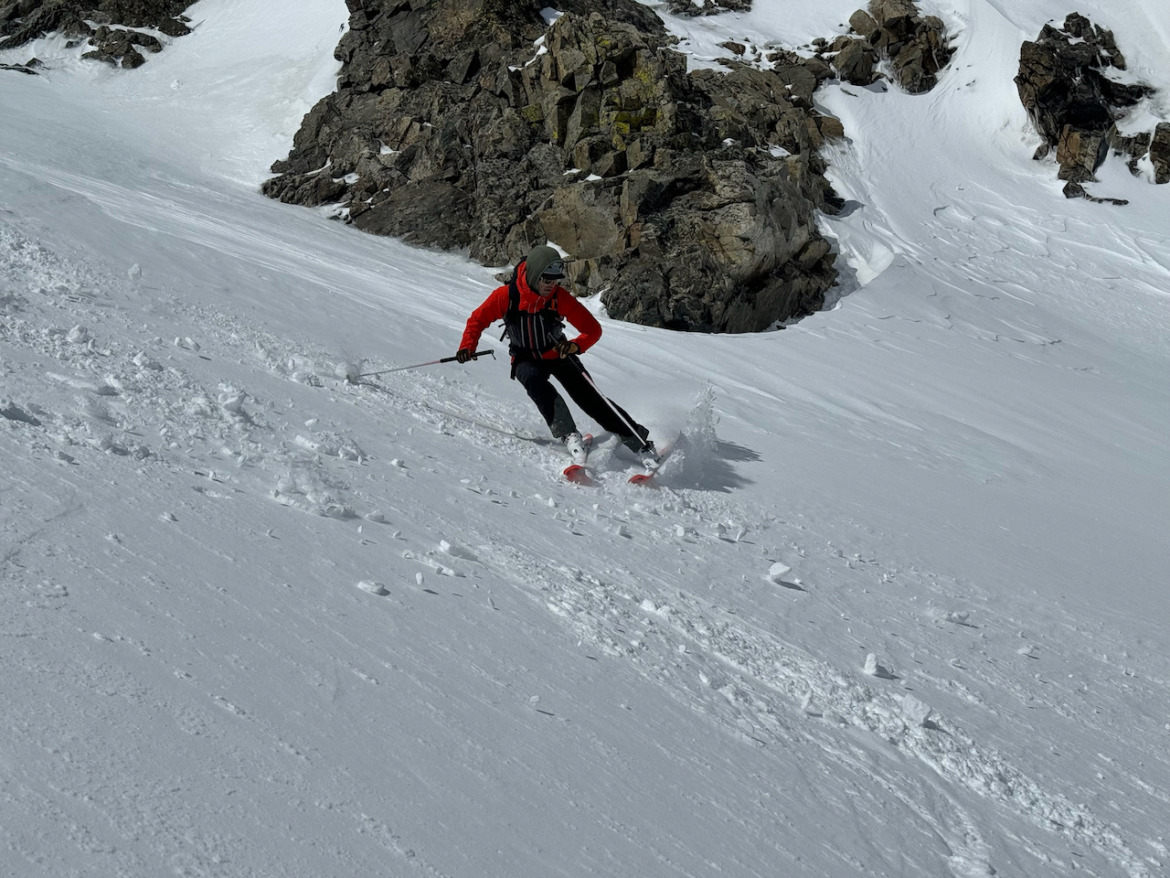
Downhill Performance
I had a lot of fun skiing the new Maestrale RS and I threw every ski and snow condition at my disposal under the new boots. I wasn’t surprised that they skied better than previous versions – what would be the point otherwise? But I was impressed with just how much better they felt pushing bigger skis through chunky snow.
In addition to more power, there’s something about the new Maestrale that’s just “crisper” than previous versions. They feel a little more energetic, quick to engage, and torsionally stiff on edge. That’s surely a blend of better fit and a more strategic material layout.
There’s a lot of start/stop skiing in the backcountry and plenty of meadow-skipping. It felt like the new boot was more alive throughout, instead of needing a kick start to engage. The rebound felt more energetic all around even at slower speeds like you expect from a Cabrio-style boot, which wasn’t particularly pronounced in previous iterations.
With more power and a better fit, I half expected the Maestrales to feel mismatched to some of the lighter, shorter skis I’ve been testing this year – the new DPS Pagoda Tour CFLs (179cm), the Fischer Transalp 92 CTI (176cm), and the Blizzard Zero G 95 (179cm). Though I typically ski that group with lighter boots, they all actually paired nicely with the Maestrale RS, especially in challenging snow conditions given that I’m 190lbs. They’d probably feel too stiff for lighter skiers on small skis, though.
On the other end of the spectrum, they felt more than adequate, maybe even perfectly matched, to bigger touring skis like my 191cm 4FRNT Hojis, 189cm Kastle TX 103s, and DPS’s new Pagoda Tour CFL 105s.
I was quite satisfied with their power and smoother progression. Did they feel like beefy 4-buckle alpine boots? Not quite, but they’re more than powerful enough for 95% of backcountry skiers. At no point was I wishing for more boot in the backcountry even as a large person skiing fast on large skis.
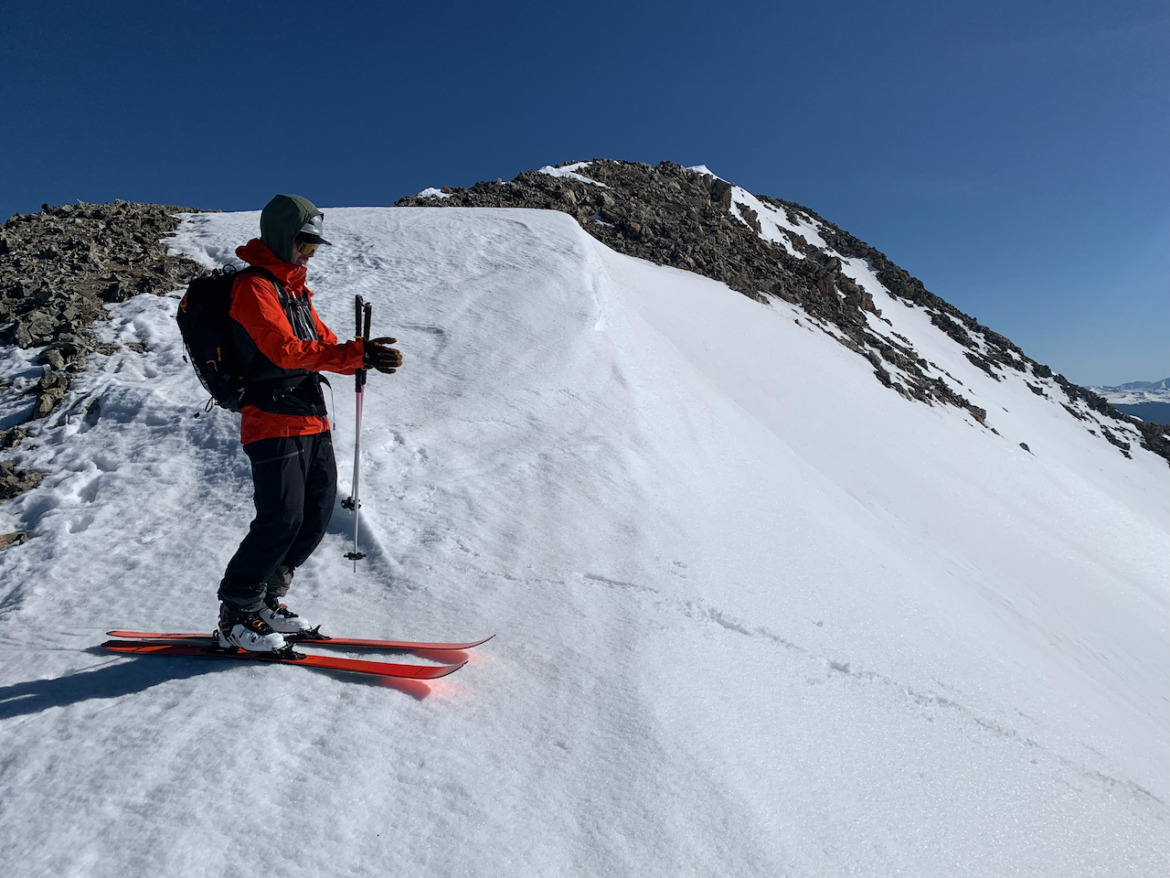
Touring Performance
The Maestrale RS has never been a featherweight, and at a claimed 1,470g per boot in size 27 (my scale showed 1,467g, for the record) the new Maestrale RS isn’t a major divergence – about 20g heavier with the addition of the camming strap. For comparison, my 2-buckle Fischer Transalp Carbon pro in the same size weighed in at 1,429g.
At first I was puzzled by the new boot’s range of motion. It felt generous rearward, limited only by my ankle. But forward there was a hard, premature stop. After fiddling around with the buckles, I realized that the bail keeper slot on the upper buckle was the culprit. The rest of the ROM was unlocked once I unhooked the buckle completely. After that, I was impressed by the big range of motion compared to previous models. It’s no F1 XT, but Scarpa claims 61 degrees, and I’d say it checks out.
Even better, the range of motion feels nearly frictionless. Much more akin to boots in the ultralight realm than the Maestrales of yore. The rearward motion is more generous than some other boots in this class, including the aforementioned Fischer Transalp Carbon Pro.
With the power strap coming unhooked and the upper buckle needing to be fully unlached, transitions weren’t as smooth as I’d hoped. But the big range of motion made it worth it, in my opinion, though it would be an easy thing for Scarpa to address in the next iterations.
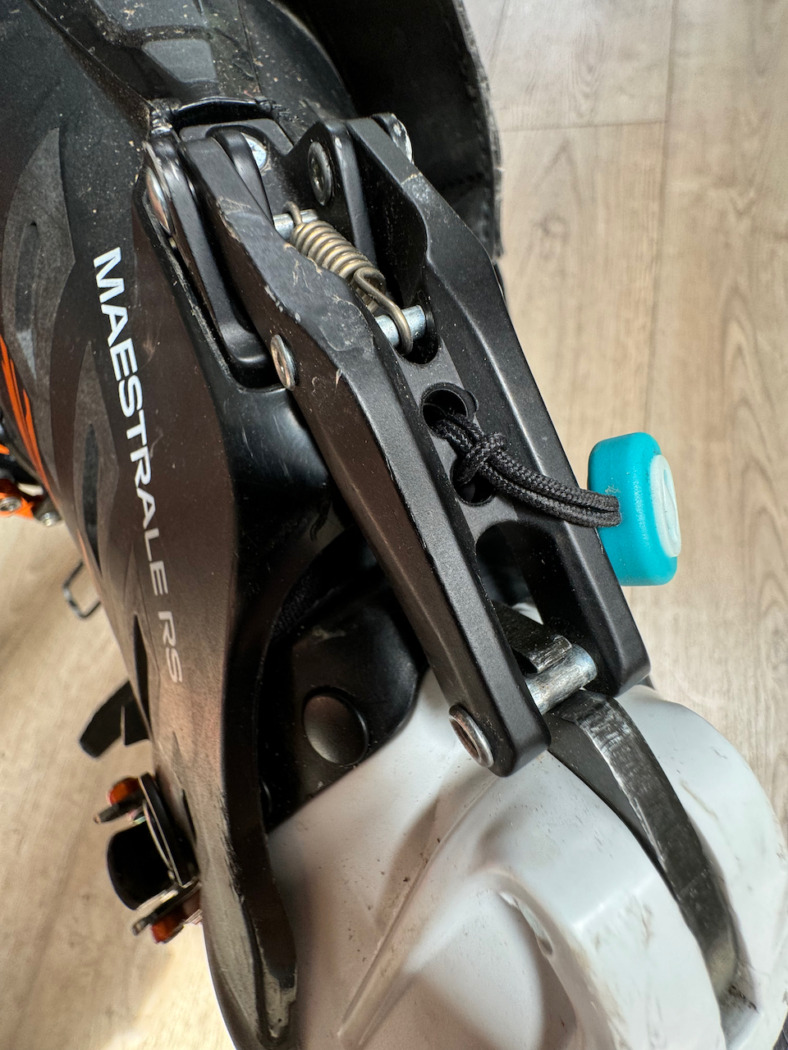
Ski/Walk Mechanism
The ski/walk mechanism has changed with nearly every iteration of the Maestrale and this new one is no different. Previous versions have succumbed to ice, especially after bootpacking. Compared to the previous version, the hook and bar switch places. The hook is now on the shell below the cuff and the bar is on the lever. It’s a better setup. Neither the hook nor the bar have gotten iced up even after trudging around in the snow on foot.
I did have one bizarre instance at the top of couloir where the spring refused to snap the lever down into a locked position. Even after clearing all possible ice and giving it a few good whacks with my adze, the lever simply wouldn’t finish its throw. I ski strapped it into a locked position and skied it as normal. It weirdly never happened again and I couldn’t replicate it afterwards. I reached out to Scarpa to ask if this was common, and they said it was not an issue they had heard of after a full season of production. I’ll call it a fluke.
Forward lean is adjustable 2° +/- the 16° factory setting via two screws at the base of the lever. I didn’t feel the need to make any adjustments, but angle-obsessed skiers will be glad the Maestrale retained the feature.
Conclusion
Haters will say the Maestrale is a “Jack of all trades, master of none,” and now I can confidently disagree. Maybe they had a point with the older versions, but that label isn’t relevant any more. The new Maestrale RS is a stellar boot – master of most. Downhill performance? Great. Fit? Much improved. Uphill and touring performance? Really good for a boot this beefy.
So, who’s it for? Everybody except who it isn’t for, which is a much shorter list. Skiers pushing softer skis or those narrower than ~95mm underfoot could get away with something lighter with an even bigger range of motion. Skiers blasting huge faces and dropping big cliffs, or those spending 75%+ of their time in the resort could probably bump up to something heavier with a fourth buckle. But basically everyone else, including those who want one boot to drive a diverse quiver of skis, will be well suited to the new Maestrale RS. They’re by far the best Maestrales yet.
Check current price at REI here.
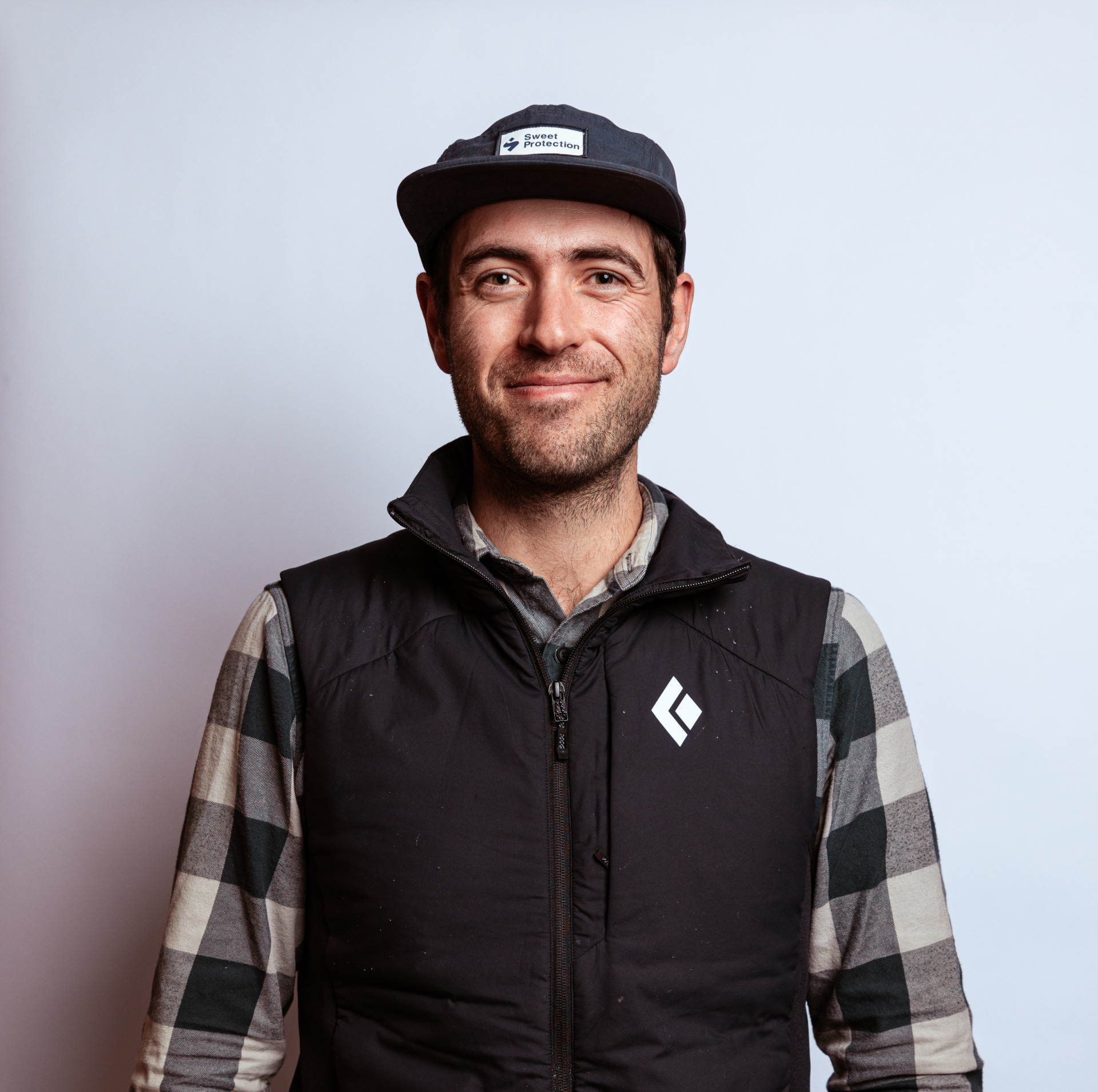
Bergen Tjossem is a ski fanatic, conservation professional, and nature nerd based in Vail, Colorado. His life and career have centered around protecting the natural environment and public lands that raised him, but as Ed Abbey put it, “It is not enough to fight for the land; It is even more important to enjoy it.” So when he’s not working his day job, you’ll find Bergen ski touring before dawn, ice climbing in the dark, running trails until his legs fall off, skiing 13er’s with his friends, or making the world’s best pizza with his wife, Rachel. You can find him on Instagram.

